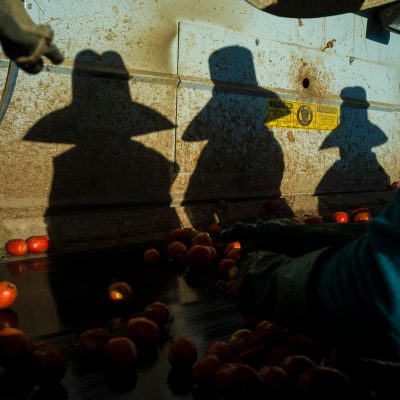
Visualizing the Climate Crisis:
Virtual Water
This is the second talk of a new series, Visualizing the Climate Crisis, which explores the potential and the role that contemporary photography, together with different disciplines, can have in addressing the multi-layered theme of climate change. The series will feature visual journalists doing evidence-based, research-informed, image-led reporting on climate issues. They will be in conversation with other professionals representing a diverse range of disciplines, such as science, policy-making, education, architecture, social innovation, media, and more, trying to explore the possibility of thinking beyond photography in a genuinely trans-disciplinary approach to expand reach, involve the wider public, and move people from being inspired to taking action.
This event features Uwe H. Martin (Slow Visual Journalist) and Francesca Greco (PhD in Water and Food Politics), in conversation with Maria Teresa Salvati (Founder and Director of Everything is Connected), moderated by Paul Lowe (Reader in Documentary Photography at UAL, London).

Ph. Credit Uwe H. Martin
What is Virtual Water?
Virtual water–also known as embodied or hidden water–is a term coined by John Anthony Allan in 1993. The concept refers to the quantity of freshwater used in the products, services, and processes people buy and use daily. Virtual water often goes unseen by the end-user of a product or service, but that water has been consumed throughout the value chain, which makes the creation of that product or service possible. The concept of virtual water trade was introduced to refer to the idea that countries can save domestic water by importing food.
How can ‘virtual water’ be visualized? Can visual storytellers and scientists collaborate to communicate the whole story to the wide public? How could we make people aware of their eating and buying habits, be conscious of their choices, and eventually reduce their footprint on the planet?
This series is organized by Everything is Connected; UAL, University of the Arts London; and VII Insider.
Through the eyes of children
Education – Public Space – Social Innovation – Visual Art
Do we live on or are we part of a planet? - Frederic Hanusch
Education – Science
Planetary Health and Visual Culture - David Cross
Education – Science – Visual Art
The need for a Xenourbanism - Rossella Ferorelli
Education – Public Space – Science
Secret Sarayaku - Misha Vallejo
Education – Social Innovation – Visual Art
Photography and the climate emergency - Symposium III
Education – Science – Visual Art
Empathy and Connection in Environmental Storytelling
Education – Science – Visual Art
Beyond photographic limits - L. Fritz Magazine
Mass Media – Visual Art
Alternative Aesthetics in Environmental Storytelling
Education – Science – Visual Art
How to make the invisible, visible? AIR by Marina Vitaglione
Science – Visual Art
Towards Trans-disciplinarity
Education – Public Space – Science – Visual Art
How photography can address climate crisis as a social justice issue
Education – Mass Media – Visual Art
Contemporary Photography
and Public Engagement
Education – Public Space – Science – Social Innovation – Visual Art
Visualizing the Climate Crisis:
Ocean acidification
Science – Visual Art
Visualizing the Climate Crisis:
the Fashion System
Education – Mass Media – Visual Art
